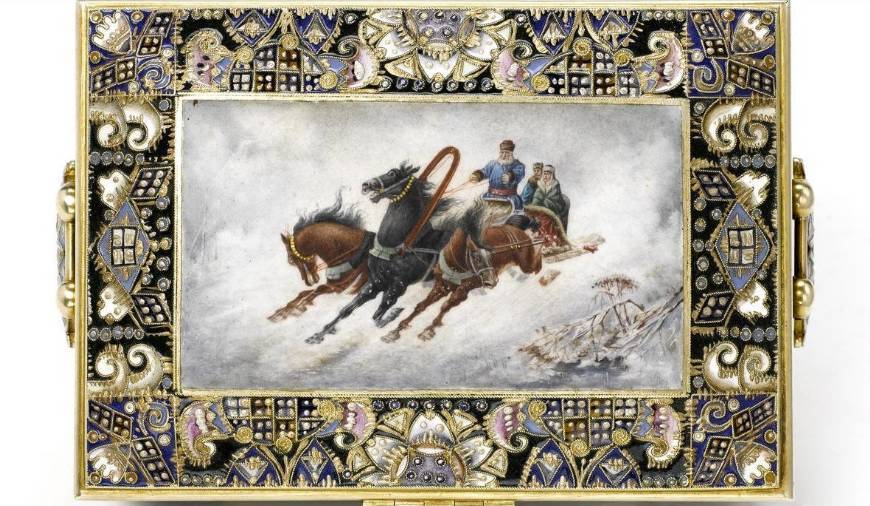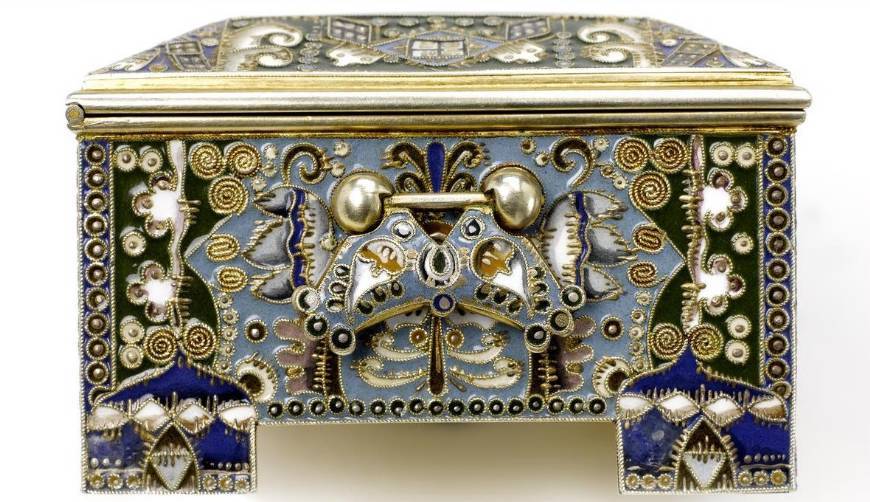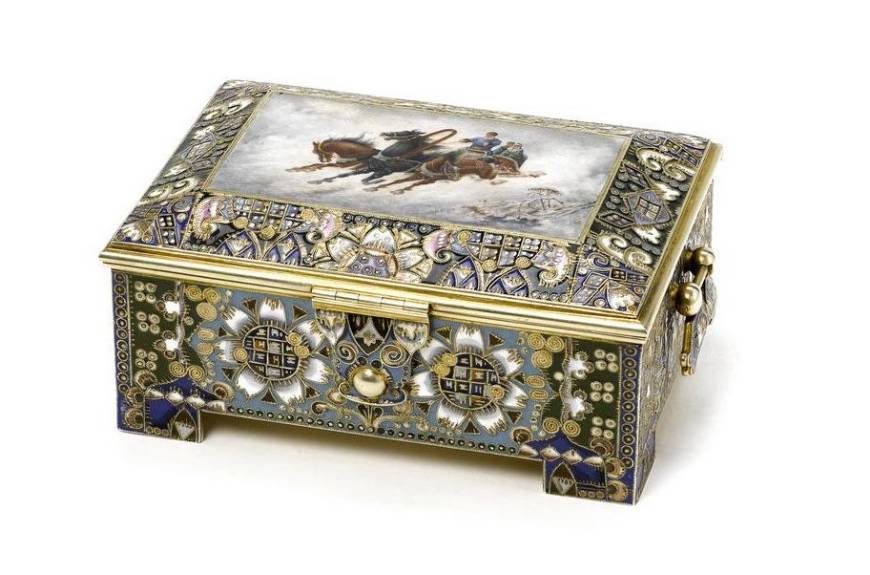Аукционы


Sale 14980 - The Russian Sale, 26 Nov 2007
New Bond Street
LOT 229
New Bond Street
LOT 229
A Russian silver-gilt cloisonne enamel jewellery box, Feodor Ruckert, Moscow, 1908-1917 the upper lid inset with enamelling en plein in the manner of Sverchkov, the borders of the hinged cover finely enamelled in neo-Russian taste, the sides similarly enriched, raised on four squared feet, with hinged carrying handles and clasp, gilt interior; in fitted satin and velvet-lined retailer's case stamped "I V Shchekleev" in Cyrillic, 88 standard
length: 12.5 cm. (5 in.) (2)
Estimate: фунт 50,000 - 70,000, $100,000 - 140,000
Footnote:
After 1908, Ruckert produced objects for Faberge as well as for numerous other retailers. Here it appears that the gold and silver merchant Ivan Vasilievich Shchekleev, who traded in Moscow and Kharkov, sold this Russian casket.
The offered lot underlines Feodor Ruckert's mastery in linking the colour palette and motifs depicted in the enamel frame with those in the central plaque. Note the stylized enamel renderings of snow flurries echoing the effect of the horse's hooves on winter ground.
It is precisely during the post-1908 period that Ruckert's style became more influenced by Art Nouveau as interpreted through the prism of Neo-Russian taste. He drew his vernacular from textured ornament on wood carvings, stylized foliage in Bilibin illustrations, as well as the onion domes,kokoshniks and boyar accoutrements that were so symbolic of Russia. As familiar as Ruckert would have been with the creative output of Abramtsevo and Talashkino in the decorative arts, he managed to combine these for the enamel frame with plaques drawn from popular images often repeated in the lacquer works of Lukhutin and Vishniakov.
For similar Ruckert box, see Faberge, Geza von Habsburg, New York: The Vendome Press, 1987, p. 283.
With thanks to Anne Odom for research suggestions.
Sold for £240,000 inc. premium

Еще один, не менее интересный русский лот - шкатулка для украшений, изготовленная из позолоченного серебра и покрытая эмалью. Шкатулка выполнена мастером фирмы Фаберже Ф. Рюкертом (Feodor Ruckert) в Москве около 1910 г. Верхняя ее крышка расписана в стиле картин Сверчкова, грани украшены в неорусском стиле, а внутри шкатулка отделана шелком и бархатом. Эстимейт лота составил Ј50 000-70000


